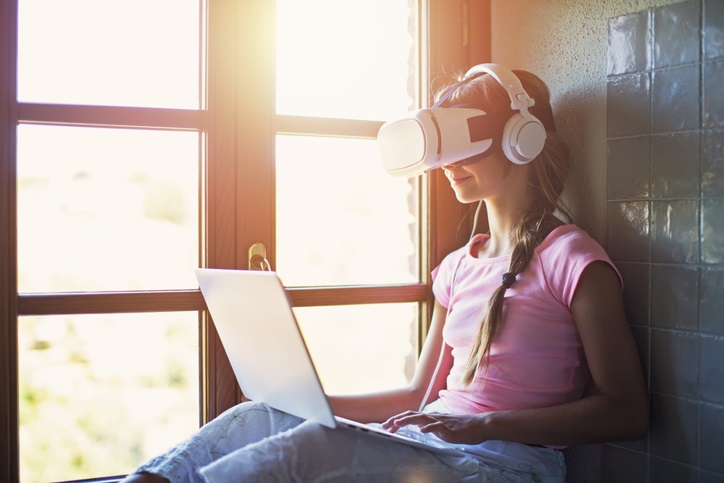Integrating Mixed Reality (MR) into education presents a transformative potential, reshaping how we approach learning and teaching. MR, encompassing both Virtual Reality (VR) and Augmented Reality (AR), offers immersive, interactive experiences that could revolutionize educational practices. This essay delves into the multifaceted ways MR can advance learning, considering its application across various educational levels and disciplines.

Mixed Reality can significantly enhance student engagement, a critical component in effective learning. By providing immersive experiences, MR can captivate learners’ attention in ways that traditional methods may not. For example, history students could virtually walk through ancient cities, science students could interact with 3D models of molecules, and medical students could practice surgeries in a simulated environment. This immersive nature not only makes learning more interesting but also aids in better retention of information.
MR caters to diverse learning styles, particularly visual and kinesthetic learners. Traditional teaching methods often favor auditory and reading/writing learners, but Mixed Reality provides a platform for those who learn best through seeing and doing. For instance, physics students can visualize and manipulate physical forces in a virtual environment, making abstract concepts more concrete and understandable.
Mixed Reality can make education more accessible and inclusive. Students with physical disabilities or learning differences can benefit from customized MR experiences tailored to their needs. A student with mobility issues can explore geological formations virtually, or a student with dyslexia can interact with text in a more engaging and less intimidating way. MR also holds the potential to break down geographical barriers, allowing students from different parts of the world to participate in the same learning environment, fostering a global classroom.
MR provides a safe and controlled environment for learning. In fields like chemistry or medicine, where practical experience is crucial but real-life practice can be risky, Mixed Reality offers a risk-free environment for experimentation and practice. Students can conduct hazardous experiments or medical procedures without fearing real-world consequences, leading to a more confident and competent learning experience.
Mixed Reality aids in developing essential 21st-century skills such as problem-solving, critical thinking, and collaboration. In an MR environment, students are often presented with complex scenarios, requiring them to think critically and solve problems creatively. Additionally, MR facilitates collaborative learning experiences where students can collaborate in virtual spaces, developing teamwork and communication skills.
MR allows for a high degree of customization and personalization in learning experiences. AI algorithms can adapt virtual environments to suit individual learning paces and styles. This personalized approach ensures that students are neither under-challenged nor overwhelmed, maximizing their learning potential.
Mixed Reality uniquely bridges the gap between theoretical knowledge and practical application. For example, business students can simulate running a company in a virtual economy, applying theoretical knowledge to real-world-like scenarios. This application of theory to practice enhances understanding and prepares students for real-world challenges.
Mixed Reality extends beyond traditional education, offering opportunities for lifelong learning and professional development. Professionals can use MR for continuous learning and skill enhancement in their respective fields. For instance, as a private pilot, you could use MR for flight simulations to enhance your safety skills.
MR also opens new avenues for research in educational methodologies. Researchers can study how students interact with MR environments to develop more effective teaching strategies. This can lead to a deeper understanding of how we learn, potentially revolutionizing educational theories and practices.
While the initial setup for MR can be costly, in the long run, it offers a scalable and cost-effective solution for educational institutions. Once developed, MR programs can be distributed and reused across multiple locations and times, reducing the need for physical resources and infrastructure.
Mixed Reality environments encourage creativity and innovation. Students are not limited by physical constraints and can experiment with ideas and designs in a virtual space. This freedom can lead to innovative solutions and approaches, fostering a culture of creativity and forward-thinking.
MR prepares students for a future increasingly dominated by technology. By integrating MR into education, we are not only teaching current knowledge, but also equipping students with the skills to navigate and adapt to future technological advancements. In conclusion, Mixed Reality holds tremendous potential in advancing education by providing immersive, interactive, and personalized learning experiences. Its ability to cater to different learning styles, enhance engagement, and bridge the gap between theory and practice makes it a powerful tool in the educational landscape. As technology continues to evolve, Mixed Reality will play a pivotal role in shaping the future of education, making learning more effective, accessible, and aligned with the demands of the 21st century.